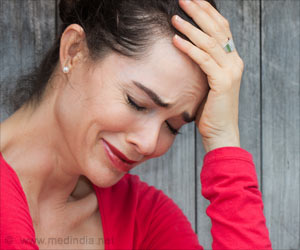An international group of researchers created computer simulations to study the outbreak of influenza epidemic with a view to contain it
An international group of researchers created computer simulations to study the outbreak of influenza epidemic with a view to contain it. They studied as to what strategy they should follow to control the potential epidemic and what the people should do to decrease the transmission of the disease, if it spreads to a city of the size of Chicago, Ill.
The new results, based on three different computer simulation models, are described in a paper published in the Proceedings of the National Academy of Sciences by scientists involved in the Models of Infectious Disease Agent Study (MIDAS). MIDAS is a collaboration of research and informatics groups supported by the National Institutes of Health (NIH) to develop computational models to examine interactions between infectious agents and their hosts, disease spread, prediction systems, and response strategies.The global epidemic of avian influenza in bird populations, as well as the risk of a virulent form of the bird flu virus being transferred to humans, has made influenza pandemic preparedness a top public health priority in the United States, Europe, and other countries. The great influenza pandemic of 1918 resulted in 40 to 50 million deaths worldwide. If a pandemic were to occur today, it could cause widespread social and economic disruptions.
In the paper, “Modeling Targeted Layered Containment of an Influenza Pandemic in the USA,” members of the MIDAS Working Group on Modeling Pandemic Influenza concluded that a timely implementation of targeted household antiviral prevention measures and a reduction in contact between individuals could substantially lower the spread of the disease until a vaccine was available.
The groups coordinated efforts to each create individual-based, computer simulation models to examine the impact of the same set of intervention strategies used during a pandemic outbreak in a population similar in size to Chicago, which has about 8.6 million residents. Intervention methods used were antiviral treatment and household isolation of identified cases, disease prevention strategies and quarantine of household contacts, school closings, and reducing workplace and community contacts. Although using the same population, each model had its own representation of the combinations of intervention. All of the simulations suggest that the combination of providing preemptive household antiviral treatments and minimizing contact could play a major role in reducing the spread of illness, with timely initiation and school closure serving as important factors.
“VBI’s computer simulation models are built on our detailed estimates for social contacts in an urban environment,” said VBI Professor and NDSSL Deputy Director Stephen Eubank, who lead the VBI team in the working group. “They provide a realistic picture of how social mixing patterns change under non-pharmaceutical interventions such as closing schools or workplaces. For example, when schools close, young students require a caregiver’s attention. That can disrupt social mixing patterns at work if a working parent stays home or make closing schools pointless if the children are placed in large day-care settings. We can use our model to suggest the best mix of intervention strategies in a variety of scenarios, taking factors like these into account.”
Bruno Sobral, Executive and Scientific Director of VBI, remarked: “Transdisciplinary science, which is the foundation of the way we do research at VBI, requires a special type of collaborative framework at the very outset of a project. The highly detailed social-network models that underpin this international research project arise from transdisciplinary science that removes disciplinary boundaries and promotes innovation. The impact of this approach to science is highlighted by the success of this research undertaking which benefits from a very clear interface between diverse experts in high-performance computing, disease modeling and public health practice.”
Advertisement
“These models, which are built from the best available data and with the best tools, contribute greatly to our understanding of how a pandemic could spread and what measures might protect the public’s health,” said Jeremy M. Berg, Ph.D., director of NIH’s National Institute of General Medical Sciences, which supports the MIDAS program. “But they are not our only resource—field work and experimental studies remain critical and will enhance the quality and reliability of these and other models.
Advertisement
CGP/L






